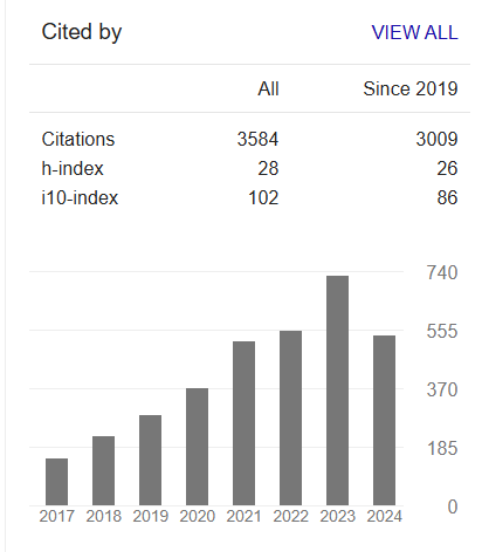Effects of Stem Cutting Time and Height on Yield Components and Yield of Rice Ratun System (Oryza sativa L.)
Vicky Silvia Nuzul(1*)
(1) Departemen Budidaya Pertanian, Fakultas Pertanian, Universitas Gadjah Mada
(*) Corresponding Author
Abstract
Keywords
References
Abdulrachman, S., E. Suhartatik, Erdiman, Susilawati, Z. Zaini, A. Jamil, M. J. Mejaya, P. Sasmita, B. Abdulah, Suwarno, Y. Baliadi, A. Dhalimi, Sujinah, Suharma dan E. S. Ningrum. 2015. Panduan Teknologi Budidaya Padi Salibu. . Diakses pada 21 Agustus 2016.
Akhgari. H, Niyaki S.A.N. 2014. Effects of first arvest time on total yield and yield component in twice harvesting of rice (Oryzasativa L.) in Rasht, Iran. Int. J. Biosci 4 (5): 210-215.
Badan Pusat Statistik. 2015. Survei Sosial Ekonomi Nasional 2016 Maret. . Diakses 8 Januari 2017.
Direktorat Jendral Prasarana dan Sarana Pertanian. 2013. Optimalisasi Lahan Melalui Teknologi Salibu, satu kali tanam 3 kali panen 1tahun. Dirjen Prasarana dan Sarana. Kementerian Pertanian.
Erdiman, Nieldalina, Misran, dan Y. Mala. 2013. Peningkatan Produksi Padi dengan Teknologi Spesifik Lokasi Sumatera Barat (Teknologi Salibu). Laporan Hasil Pengkajian Tahun 2013. BPTP, Sumatera Barat.
Islam MS, Hasannuzzaman M, Rukonuzzaman. 2008. Ratoon rice response to different fertilizer doses in irrigated condition. J Agric Conspect Sci : 197-202.
Madani A., Rad, Pazoki, Noumoammdi, and Zarghami. 2010. Wheat (Triticum aestivum L.) grain filling and dry matter partitioning responses to source:Sink modification under post-anthesis waterand nitrogen deficiency. Maringa 32 (1):145-151.
Nyoto, W. 2014. Respon tanaman padi (Oryzasativa L.) sistem ratoon terhadap tinggi pemangkasan dan dosis pemberian mikoriza pada fave vegetatif. Fakultas Pertanian. Universitas Pembangunan Nasional. Skripsi.
Pasaribu, P.O. 2016. Sifat fisiologi dan agronomi padi ratun dengan sistem salibu pada budidaya System of Rice Intensification (SRI). Fakultas Pertanian. Institut Pertanian Bogor. Skripsi.
Suhartik, E., Abdulrachman, Makarim A.K., Widyanto, Indra, Pratiwi G.R., Rifki, Trisnaningsih, Mansur ,A.., Sukmana, C., Darmawan, A., Pulung. 2015. Studi potensi ratun sistem Salibu pada beberapa varietas padi sawah. Laporan Akhir Tahun. Balai Besar Penelitian Tanaman Padi.
Susilawati. 2011. Agronomi Ratun Genotipe-Genotipe Padi Potensial untuk Lahan Pasang Surut. Sekolah Pasca Sarjana. Institut Pertanian Bogor, Bogor.
Susilawati, S.P.Purwoko, H. Aswidinnoor, E. Santosa.2012. Tingkat produksi atun berdasarkan tnggi pemotongan batang padi sawah saat panen. J. Agron. Indonesia 40 (1):1-7.
Article Metrics
Refbacks
- There are currently no refbacks.
Copyright (c) 2019 Vegetalika

This work is licensed under a Creative Commons Attribution-ShareAlike 4.0 International License.
VEGETALIKA journal indexed by:






